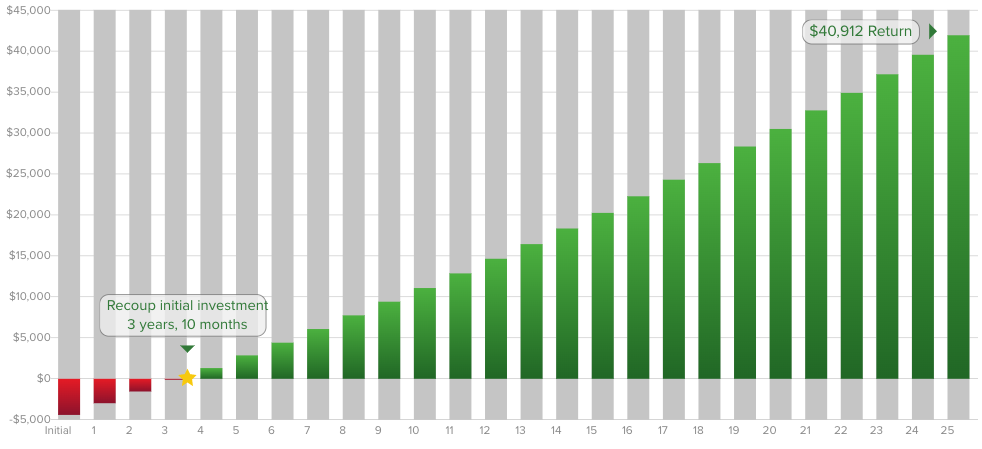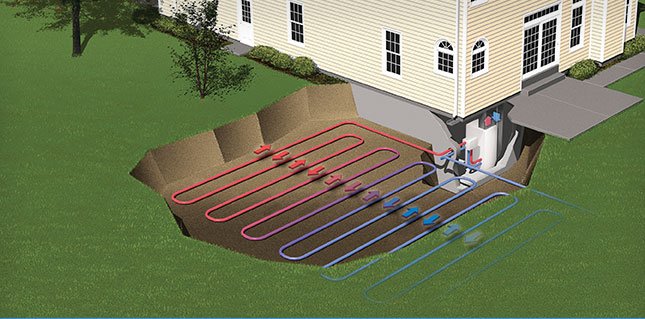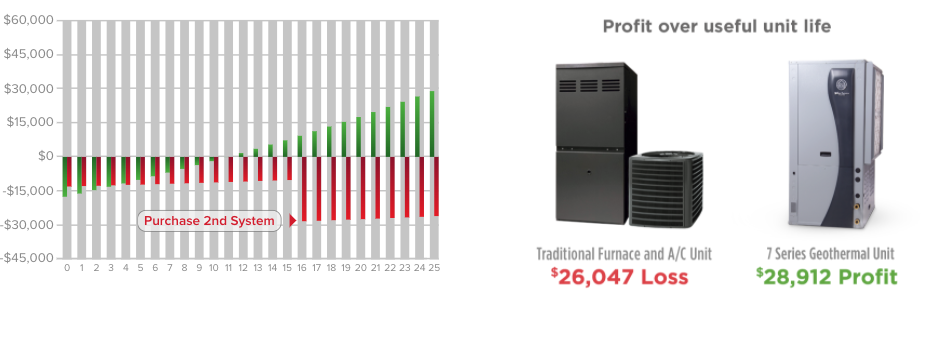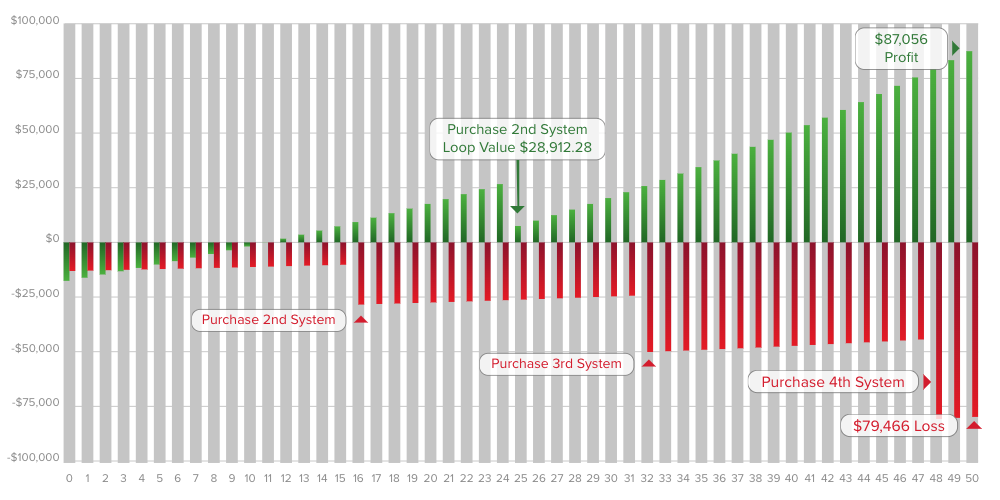- GeoLink Design Studio based on 2500sq ft. home in the Midwest. Electricity: $0.12/kWh, Natural Gas: $1.50/ccf, Annual inflation: 2.18%
- 2009 Jana Laboratories study
- ASHRAE
- US Department of Energy
Save Money with Geothermal
Get Started Today!
How Much Can You Save?
Financial Case For A Geothermal System
If you're shopping for new HVAC equipment, it's probably because your existing equipment is nearing the end of its useful life or you're building a new house. Both scenarios require some level of investment.
What's the minimum you'd be happy with in your home? If you're considering geothermal it's very likely that efficiency is important to you. If the minimum you'd accept is a 16 SEER air conditioner paired with a 92 AFUE furnace, it makes sense to use that cost as a starting point for analysis because it represents the minimum amount of money you can spend and still be comfortable (literally).
Costs for a 16 SEER air conditioner and a 92 AFUE furnace can vary greatly—but it can reach $13,000 in many areas. Again, prices vary greatly based on several factors (geography, ground composition, size of home, equipment chosen, etc.), but let's assume the cost to install a geothermal heat pump in your area is $25,000. There's currently a 30% US federal tax credit, decreasing each year through 2034. That's $7,500 as a credit on your taxes, not just a deduction. The initial cost difference between an ordinary system and a geothermal system is just $5,500. Your area may also have other additional incentives that won't be factored in for this calculation.
| Cost difference between geothermal and new A/C + furnace | $5,500 |
| Annual savings of geo versus aging 13 SEER/80 AFUE system[1] | $1,416 |
| Time to recoup initial investment | 3 years, 10 months |
| Profit after 25 years (average life of GHP[4]) | $40,912 |


The useful life of the underground energy collector can be more than 100 years[2] and won't need to be replaced at the end of the 25-year life of the indoor heat pump. This means the upgrade costs for the next system will only be for the indoor equipment and, therefore, will be much cheaper.
| Conventional | Geothermal | |
|---|---|---|
| New equipment | 16 SEER/92 AFUE | 41 EER / 5.3 COP |
| Annual savings (versus existing 13SEER/80AFUE)[2] | $162 | $1416 |
| Useful life | 15-18 years[3] | 25 years[4] |
| Break-even point | NEVER | 11 years, 1 month |
| Return at 25 year mark | $26,047 loss | $28,912 profit |
| Cumulative energy savings | $5,310 saved | $46,412 saved |

As you can see, the energy savings from a 16 SEER air conditioner and 92 AFUE furnace will NEVER pay you back during the life of the system. In fact, you'd still be over $10k in the hole when the system needed to be replaced at the end of the 16-year mark—putting you even farther from payback.
When the first WaterFurnace unit finally needs replacement at the end of the 25-year mark, the 2nd furnace and 2nd air conditioner will already be 1/3rd of the way through their expected lives—and you'd be $26,046 in the hole overall. Meanwhile, the WaterFurnace system will have already paid for itself through energy savings - and gone on to generate an additional $28,912.
Another important benefit of geothermal is that the underground energy collector has a life expectancy of more than 100 years[2]. This means the original collector can be used with a second WaterFurnace unit—making the second system much cheaper.
The economics are even more dramatic for the second WaterFurnace system:A homeowner who chooses a furnace and A/C will have gone through their 3rd (and started on their 4th) sets of equipment to match the lifespan of 2 geothermal units.
| 50 Year Analysis | Conventional | Geothermal |
|---|---|---|
| Number of Systems | 4 | 2 |
| Returns at the 50 year mark | $79,466 loss | $87,056 profit |
| Cumulative Energy Savings | $14,414 saved | $125,988 saved |

About Atlantic Shores Heating and Cooling
Our team services most major brands of geothermal and HVAC equipment. We’ve been proudly serving Suffolk and the surrounding area with top of the line products, service, and maintenance for years and hope to do the same for you, give us a call today!




